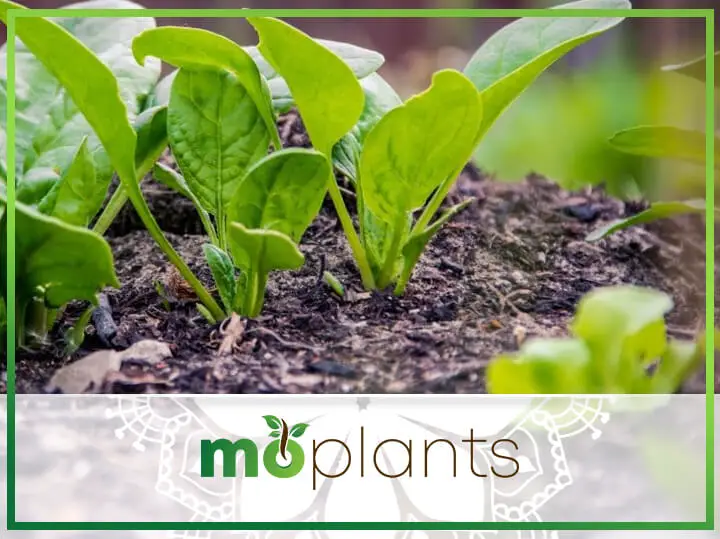If you want to start a healthy vegetable garden, you need to surround it with the best soil for your roots, vegetables, and plants.
Factors such as determining the most compatible soil type for your area and incorporating soil amendments are vital for improved soil quality and overall plant growth.
Fortunately, it is not too difficult to maintain the garden soil. If anything, these gardening tips and other essential soil information will make your life a lot easier.
What Are the Different Soil Types?
Clay Soil
You may be asking, “How will I know that I have clay soil in my garden?”
In terms of color, it has a red and orange appearance. Unlike other soil types, clay tends to be the densest and most compact, making it difficult for things like nutrients and water to penetrate it.
During the summer months, clay soil is dry and hard. If it starts raining hard, it will get sticky.
These descriptions may discourage you from purchasing clay soil for your vegetable garden, but there are solutions to improve the quality.
One way is to add organic matter, which can be done by oxygenating the soil and filling up the first 2 inches with organic material like animal manure or rock phosphate.
Besides adding organic material, another solution is loosening the soil so that you can lay down raised garden beds.
If you want to reduce back pain and apply healthier garden soil, we recommend this type of setup.
Which Vegetable Garden Plants Are Compatible With Clay Soil?
Typically, shallow root vegetables like cabbage, beans, and cauliflower grow best in clay soil. If you want to make the soil type less compact, try planting deep root crops like carrots and daikon.
Sandy Soil
Next on the list of garden soils is sandy soil. As the name suggests, it drains and dries up faster than other types.
Because it cannot maintain its original shape, water erosion may become a problem in the long run. As a result, sandy soil may not be able to retain much-needed nutrients for vegetables.
As with any other type, there are a handful of useful things and amendments for sandy soil to work out on your vegetable garden.
What you want to do is allot 3 inches for composted potting mix and organic material. Keep the ratio 2:1, respectively.
To retain water and prevent the soil from eroding, we highly advise you to add grass clippings.
For your vegetable plants to maintain maximum health, you need to keep an eye on how much watering you do. You may need to water the sandy garden soil more often during the summer months.
If you want your vegetable garden to receive ample nutrients, add fertilizers before and halfway through the growing season.
Which Vegetable Garden Plants Are Compatible With Sandy Soil?
Believe it or not, leafy greens grow well under this type of soil. These vegetable plants include collard greens and lettuce.
Some of your favorite vegetables like strawberries, peppers, and zucchini also make an appearance.
Silty Soil
If you are a fan of vegetable gardens with soft and subtle soil textures, silty soil should be your go-to option.
Unlike its sandy soil counterpart, it has the ability to keep moisture and other vital nutrients.
You may be wondering what the silty soil type is made of? To keep it simple, it is the midway point between sandy and clay garden soil.
One unique characteristic it has over other types is its high acidity. To make sure you have the current pH readings, you may want to do a soil test.
Unfortunately, not all vegetables thrive under acidic soil. For neutralization to take place, balance the acidity level by adding Lime. [R]
“How can I maintain the soil for my vegetable garden?” you may ask. You need to incorporate mulch, clippers, or other organic material at each growing season’s start and end.
Please don’t do anything with the soil so that the material can decompose and mix along with it. These will improve the soil’s nutrients, drainage, and aeration.
Which Vegetable Garden Plants Are Compatible With Silty Soil?
As long as you practice proper gardening and maintain healthy soil conditions, you will be successful in growing vegetables like garlic, beets, radish, onion, and assorted herbs.
Loamy Soil
More often than not, loam soil is the consensus choice among many homeowners and gardening enthusiasts. Some even say that it’s the best soil option among the four types.
It is a jack-of-all-trades because it contains components from each type above. You heard that right. Sand, silt, and clay make up the loamy garden soil, making it versatile and full of nutrients. [R]
Loamy soil is capable of retaining moisture and essential nutrients for extended periods. However, it also knows how to drain effectively.
So if you’re choosing which you should purchase among the four options, it is crystal clear that loamy soil stands out the most.
Which Vegetable Garden Plants Are Compatible With Loamy Soil?
Do you want to have an idea of which vegetables thrive under loamy soil?
Because loamy soil is a combination of all types, you can plant as many root vegetables as you want. In fact, you don’t even need to apply organic material to maintain the vegetable garden.
However, make sure you continue adding fertilizers so that it remains healthy and packed with nutrients.
Infographic

Conclusion
Now that we have reached the end, I hope we enlightened you on the different types of soil you can use to grow your vegetables.
By having a proper mindset and applying the right gardening techniques, we are confident you will successfully grow your desired vegetable garden in due time. HAPPY PLANTING!
For more questions or inquiries, please feel free to contact us.

